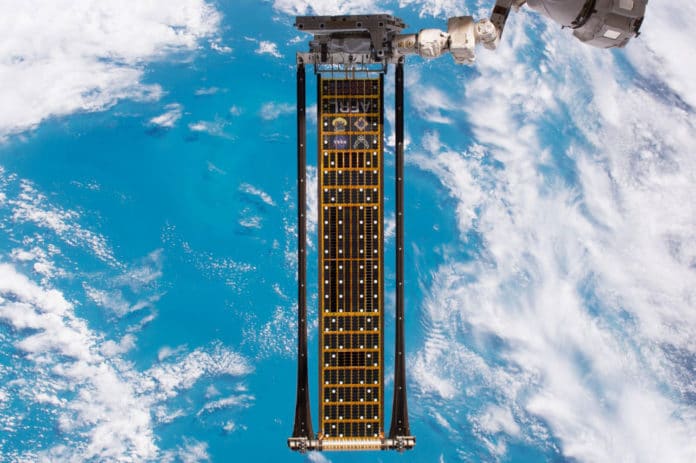Redwire said that the first pair of International Space Station Roll-Out Solar Arrays (iROSA) are ready to launch on SpaceX’s 22nd commercial resupply mission to the International Space Station (ISS). The solar arrays are set to liftoff from NASA‘s Kennedy Space Center in Florida no earlier than Thursday, June 3 at 1:29 p.m. EDT.
“Redwire’s innovative ROSA technology will provide efficient power augmentation for the space station to enable critical research as well as utilization and commercialization,” said Andrew Rush, President, and COO of Redwire. “This mission underscores the importance of station’s modularity to accommodate future upgrades and the critical role commercial infrastructure plays in enabling sustainable human spaceflight.”
Redwire partnered with Boeing, NASA’s prime contractor for space station operations, to move forward with space operations for NASA. It will execute the design, analysis, manufacture, test, and delivery of six new solar arrays that will augment power to the ISS.
The award-winning technology empowers mission control to deploy very large, flexible solar arrays that convert sunlight into electrical power and can power a wide range of missions. Using upgraded solar cells from Boeing’s Spectrolab enables each iROSA solar array to generate more than 20 kW of power. Combined, the six new arrays will generate more than 120 kW of power, bumping up the station’s maximum power capability by 20% to 30%.
The first pair of solar arrays will be installed during upcoming spacewalks after arriving at ISS on June 4. The final four arrays will reach the station by 2023.
In addition to the innovative, ultra-lightweight, compact, modular design, the Roll-Out Solar Array (ROSA) features a scalable solar array structure system developed by the Redwire subsidiary Deployable Space Systems (DSS). DSS has been developing advanced solar array technology for more than a decade to provide enabling performance and affordability for many mission applications.
The ROSA technology was first successfully demonstrated aboard the ISS in June 2017.
